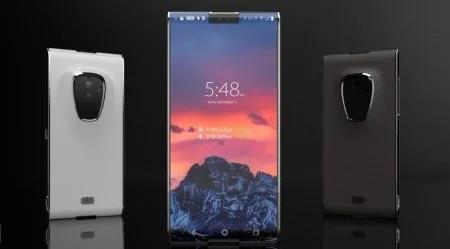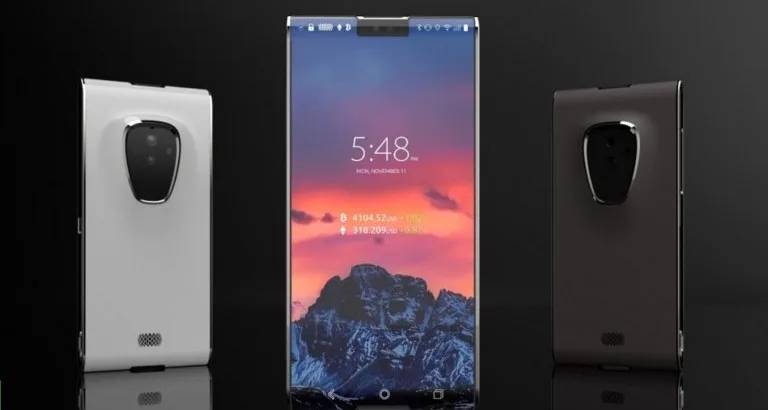Why the first blockchain smartphone is such a big deal


Mild hysteria may be warranted.
SIRIN LABS previously released the ultra secure US$16,000 (AU$21,000) SOLARIN phone, but the FINNEY is set to be a lot more affordable. If all goes to plan it will come in at around US$1,000 to be the first smartphone that creates its own blockchain.
To make full use of it, the FINNEY will be preloaded with Status, a mobile Ethereum client. If it reaches fruition, the FINNEY should be the most secure phone ever made, able to access encrypted messages, Ethereum smart contracts, an inbuilt cold storage cryptocurrency wallet and much more, right out of the box.
That will be wrapped up with a nice and simple Android OS.
Imagine a tourist landing in San Francisco while his smartphone has almost no battery power and his roaming data plan doesn't work properly. A stranger nearby might give him 20% of battery power and provide him with access to his local mobile data plan." - SIRIN whitepaper.
Simply by owning a smartphone or computer you have access to a wealth of digital resources, like data connectivity, computing power, environmental information and a whole lot more.
These resources have typically been outside your hands, but still leveraged in different ways. Such as the app that connects smartphones to create a cancer-fighting genome-sequencing supercomputer network. Or the trackers that quietly record your location, search behaviour and other information for the purposes of targeted advertising.
The idea behind the SIRIN LABS blockchain network is to put all of these back in your hands, and let you sell, use, conceal or otherwise utilise them exactly like you want. It does this by leveraging the Ethereum network and smart contract systems to offer:
- Trust - Strangers can completely trust each other, because they don't need to trust each other. Agreements made are completely transparent to both parties and will be automatically executed as agreed, outside the hands of both.
- Security - The agreements are transparent yet private, and mobile tethering will be done by ultra-secure devices with (theoretically) no chance of either party having their security compromised by the other.
- Monetisation support - The owner of a resource can get micropayments in the native digital currency for their contributions, whether it's data, battery power or anything else.
How it can be used
Like most new developments, its main uses probably haven't been imagined yet. But some of the uses that have been imagined, in the SIRIN LABS whitepaper and elsewhere, are:
- One stranger offering another a portion of their phone's battery power and select access to their data plan, in complete trust and in exchange for fair compensation.
- 100% of app revenue being paid directly to their developers.
- Users deciding which kinds of data they feel comfortable selling to advertisers, and getting paid directly for choosing to do so.
- Researchers instantly being able to tap into a worldwide network of environmental information. For example, by being able to get the exact temperature at any exact time, in any exact location, as long as there's a blockchain smartphone there.
- Users being able to buy and sell excess processing power or data. For example, a user might put their excess processing power on the market while they're sleeping, for other users who want a faster phone to purchase.
The SIRIN LABS PC
SIRIN LABS has also put forward plans for an affordable all-in-one PC, with a quite friendly target price range of about US$800.
This is intended to work in a similar way, to make full use of SIRIN LABS' resource sharing protocol and cloud based services. Its users should be able to add additional computational power, like GPU, CPU or RAM, over the blockchain.
Not using it right then? Just sell off your excess power. Doing something demanding? Just buy excess processing power with the funds you make from selling it on your off-peak.
The SRN and STN tokens
The plans call for a lot of seamless blockchain buying and selling. Currently it looks like this might be facilitated by several different tokens, the SIRIN (SRN) and Status (STN) tokens, both of which are ERC-20 compatible, and later on the IOTA token.
SIRIN SRN
SRN will be initially offered on the Ethereum blockchain following an ICO that will run from 12-25 December 2017. It can be used to buy the FINNEY and other products at a discount, and more. When everything's ready SIRIN LABS aims to transition from Ethereum to the IOTA network.
Status STN
STN is used by Status, the preloaded Ethereum-based software. It's mostly about secure communications. That's what you might be using instead of typical messaging services. STN tokens are needed to buy into the STN network, purchase access to services like push notifications and generally use and participate on the network.
Will all this actually happen?
Most of it is already happening. Buying and selling user information, excess mobile data and processing power is already a thing of the present. Similarly, the trustless contracts of Ethereum, which allow for the actual reliable exchange of these resources, is also happening already.
The proof of concept is already out there. If SIRIN LABS' developments go according to plan, there's no reason not to think it will all go down exactly as described.
The main hurdle is creating a functional and sufficiently tempting phone. In an email to Android Authority, a SIRIN LABS representative said "a few hundreds of thousands of devices" would be needed to support this ecosystem. If FINNEY sales fall short it might not get off the ground.
That's a big ask, especially for an AU$1,300 phone. But it's still very achievable.
This isn't the first time SIRIN has made a phone, and despite the outlandish results it might bring, there's little reason to believe that any of the technology needed is out of reach.
For some perspective:
- SIRIN LABS is aiming for $25 million in its ICO to get the phone off the ground. By contrast, the Status ICO managed to rake in over $100 million in just 24 hours.
- In 2016 alone an estimated 2.7 million iPhones were sold in Australia alone, many at not dissimilar prices. Apple only had a 37% market share in Australia that year. As long as it lives up to its specifications, selling a measly few hundred thousand FINNEYs should be no problem.
Pictures: SIRIN LABS
